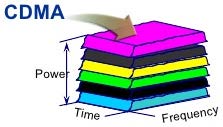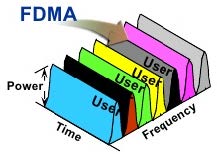ChanBond sued several cable company defendants alleging patent infringement of three wideband signal distribution system patents in the District of Delaware in 2015. The defendants included Atlantic Broadband Group, Bright House Networks, Cable One, Cablevision, Cequel Communications, Charter Communications, Comcast Communications, Cox Communications, Mediacom Communications, RCN Telecom Services, Time Warner Cable, WaveDivision Holdings, and Wideopen West Finance (District of Delaware case nos. 15-cv-842 to -854). Non-party Cisco filed eight IPR petitions against the three ChanBond patents in September 2016, and a stay was ordered on March 3, 2017 pending the PTAB’s decisions to institute IPR.
Cisco’s IPR petitions had mixed results. The day the stay was ordered the PTAB instituted inter partes review of claims 1,2, 5, 6, 19, 20, 23 and 29 from US Patent 7,941,822 (IPR2016-01744), but denied institution of claims 13 and 14 in a second IPR petition of the ‘822 patent (IPR2016-01746). (Note: RPX filed an IPR petition on claims 1-31 of the ‘822 which was instituted for trial and oral arguments were held in January 2017. A final written decision has not been issued by the PTAB yet. See IPR2016-00234.)
On March 29, 2017, six IPR petitions for US Patent Nos. 8,341,679 and 8,984,565 were denied institution. The denial was based on a difference in opinion about the broadest reasonable interpretation for the term “RF channel,” which affected every claim Cisco sought to have reviewed. (For brevity, only the documents relating to IPR2016-01898 will be referenced in the following discussion, since the other 5 IPR petitions were denied on substantially identical grounds in the remaining five proceedings: IPR2016-01899, -01900, -01889, -01890, and -01891).
Cisco took the position that “RF channel” encompasses not only radio transmissions in different frequency bands, but also radio transmissions that can be in the same frequency band that use a code multiplex to encode the transmission into different “channels.” Cisco proposed a construction for “RF channel” that “includes ‘an RF path for transmitting electric signals.'” (Petition at 13, citing the ‘679 patent at 6:62-65.) Cisco’s prior art was also directed to Code Division Multiple Access (CDMA) systems which rely on spread spectrum (“a wideband channel,” as stated in Ex. 1002, ¶ 58) as opposed to different transmission bands.

ChanBond filed Preliminary Responses that rejected such a broad interpretation of “RF channel,” asserting “the invention is directed to using multiple separate RF channels to transport a data stream — a specific type of frequency-division multiple access (FDMA).” (Prelim. Resp. at pp. 6, 14-24.) ChanBond asserted that Cisco’s CDMA prior art “is the polar opposite of [its specific FDMA] invention.” (Prelim. Resp. at p. 7.)

The PTAB rejected Cisco’s assertion that multiple channels are multiplexed on the same frequency bands, and that code channels or CDMA channels could be an RF channel within the meaning of the ‘679 patent. The panel cited an inconsistent statement by Cisco’s expert which described a FDMA and CDMA hybrid system using Walsh codes: “[t]he mutual orthogonality of Walsh codes allows one particular coded channel to be isolated and decoded from all other coded channels, even though they are all broadcasting on the same RF channel.” (italics added by the panel). The panel reasoned that this statement referred to a particular frequency band as an “RF channel” and to divisions within the RF channel as “coded channels,” and therefore gave no weight to the expert’s testimony regarding the meaning of “RF channel.”
The PTAB concluded that the term “RF channel” as used in the ‘679 patent “does not include code channels – for example data streams created by CDMA– but instead refers only to frequency bands, such as those created by FDMA.” (Final Written Decision of IPR2016-01898, p. 13.) All six of the IPR petitions of the ‘679 and ‘565 patents were denied based on the claim construction issue and because Cisco’s grounds were based CDMA prior art.
It appears that the one year window after service to file IPRs has passed, so it will be interesting to see if a request for rehearing is filed by Cisco to challenge the panel’s decision. It is not clear if the interpretations proffered by the panel will somehow pose issues for ChanBond to enforce its patents as planned, but it has at least avoided further review of the ‘679 and ‘565 patents for now.



 />i
/>i

